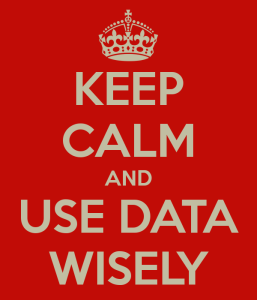School systems have a shared responsibility to improve student learning outcomes. Likewise, for staff there is an obligation to provide extended opportunities to build on what they already know. High quality recording methods that ascertain growth mapped over time can identify trends and highlight threats allowing organisations to predict implications of applying a learning initiative or intervention. This can become complex and messy due to competing agendas and a variety of interpretations. For this reason, organisations have an obligation to develop a fair, ethical and shared understanding how data will be used and interpreted (Stoll & Fink,1996).
A strong and user-friendly data system when properly implemented, empowers teachers to discover value in functions that bring student data to their fingertips (Brunner, Fasca, Heinze, Honey, Light, Mandinach & Wexler, 2005). Therefore, teachers require adequate learning support if they are to use data to improve practice (Datnow, Park & Wohlstetter, 2007). Collaboration is a critical mechanism to change practice and affect professional learning, it can be used to create a vision for data use and in modeling protocols (Knapp, Swinnerton, Copland & Monpas-Huber, 2006)
The core elements of the data usage culture are derived by interplay between the school’s subsystems which provides evidence that informs about professional capacity, student learning environment, parent, school community ties and the instructional guidance in accordance to curriculum outcome data points (Bryk, Sebring, Allensworth, Easton & Luppescu, 2010) thus, offering commentary on a school’s effectiveness.
Many schools may be data-rich but insight-poor (RP Group, 2009). By strengthening data-based usage organisations, leaders and teachers can identify the purpose of the data, for example, is it primary collected as an internal or external measure? What gaps in curriculum, poor paced instruction and idiosyncratic expectations for student performance does it identify? How can these issues begin to be addressed? (Bryk, et al., 2010).
Sharratt and Planche (2016) indicate, data use requires reflective action such as, interpreting and engaging with it, making assessments of it while continuing to move and being reflective of its implications, accompanied by accountable conversation as co-learning professionals (Earl & Katz, 2002). It is essential in critical data inquiry to look at the information in non-accusatory, non-judgemental and non-evaluative ways to draw out deep and strategic knowledge that will refine, enhance and build capacity. This is done by ongoing, cyclical practices that revisits and draw new data regularly. Having a culture of data-based inquiry can cause mid-course corrections, strategic interventions or feedback to students that will lead to change.
In developing a mind of inquiry that links the data to leadership, Earl & Katz (2002) suggest, professionals in the analysis stage need to value deep understanding, reserve judgement on ambiguity, take a range of perspectives to identify divergence in data lines and systematically pose increasingly focused questions drill down and bring clarity and context. This understanding helps the user to think about the purpose of the data by identifying sound and unsound information (Sharratt & Fullan, 2012).
Data literate organisations make time for reflection, discussion and refinement where observations and assumptions are shared and unpacked (Sharratt and Planche, 2016). One inquiry leads to another revealing new layers of investigation. With each inquiry they see their progress with relation to their goals in greater definition. As greater definition is observed, it builds cultures that support inquiry and data use, increasing its influence.
My challenge is how can I ensure that I follow Sharratt and Planche's (2016) advice and ensure I make time for reflection, discussion and refinement? I would love your thoughts.
Reference:
Brunner, C., Fasca, C., Heinze, J., Honey, M., Light, D., Mardinach, E., & Wexler, D. (2005). Linking data and learning: The Grow Network study.Journal of Education for Students Placed at Risk, 10(3), 241-267.
Bryk, A. S., Sebring, P. B., Allensworth, E., Easton, J. Q., & Luppescu, S. (2010). Organizing schools for improvement: Lessons from Chicago. University of Chicago Press.
Datnow, A., Park, V., & Wohlstetter, P. (2007). Achieving with data: How high-performing school systems use data to improve instruction for elementary students. Los Angeles: University of Southern California, Rossier School of Education, Center on Educational Governance.
Earl, L., & Katz, S. (2002). Leading schools in a data-rich world. In Second international handbook of educational leadership and administration (pp. 1003-1022). Springer Netherlands.
Knapp, M. S., Swinnerton, J. A., Copland, M. A., & Monpas-Huber, J. (2006). Data-informed leadership in education. Seattle, WA: University of Washington, Center for the Study of Teaching and Policy.
RP Group. (2009). Basic Skills Outcomes Capacity Study: The Use of Evidence in California Community Colleges. http://www.rpgroup.org/sites/default/files/BSOCUseofEvidenceBrief.pdf
Sharratt, L., & Fullan, M. (2012). Putting faces on the data: What great leaders do!. Corwin Press.
Sharratt, L., & Planche, B. (2016). Leading collaborative learning: Empowering excellence. Corwin Press.
Stoll, L., & Fink, D. (1996). Changing our schools: Linking school effectiveness and school improvement. Open University Press.
Images:




Comments
Post a Comment